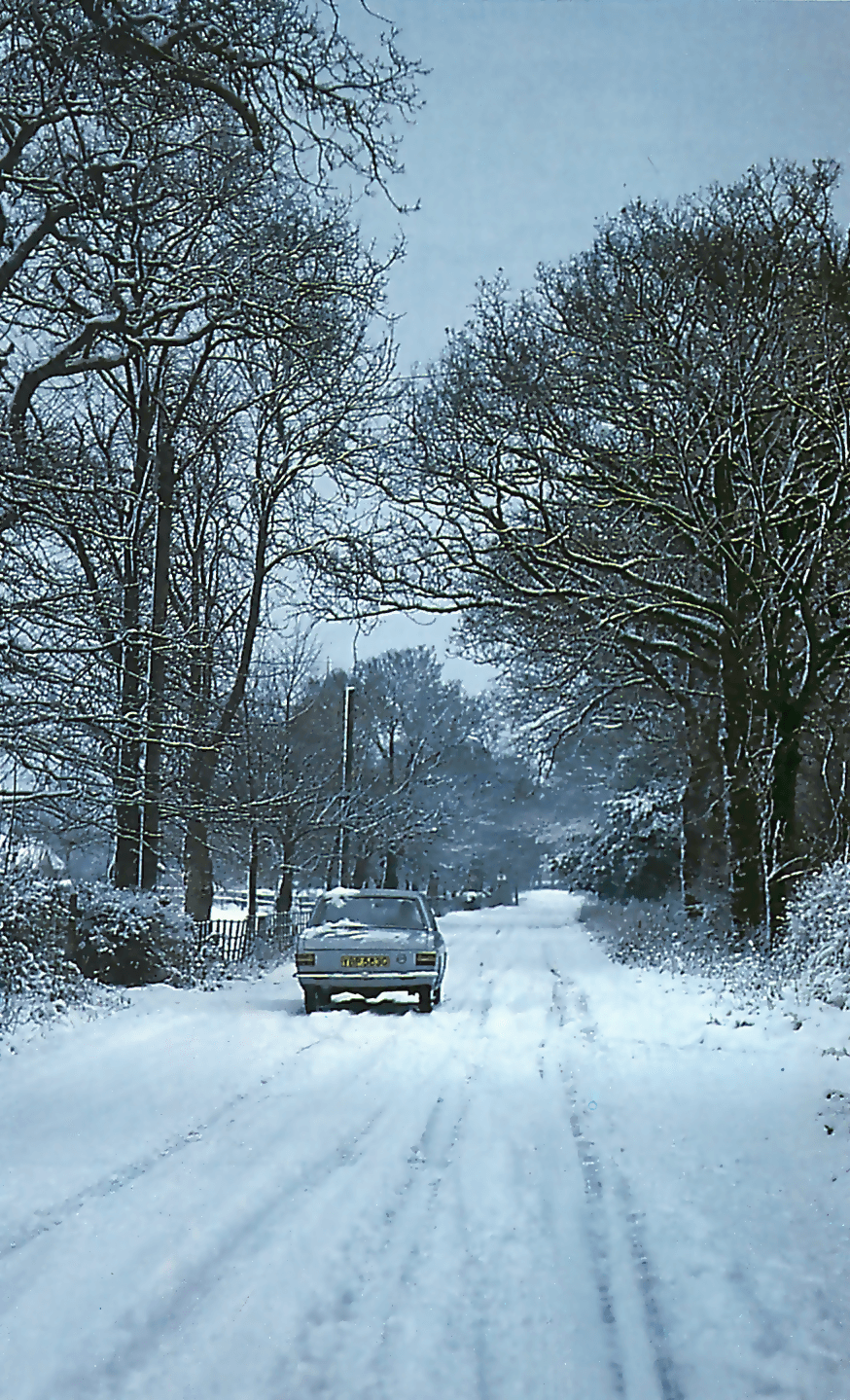Why Does Snow Or Ice On The Road Increase The Risk Of A Vehicle Spinning Off The Road?

When the roads are covered in ice or snow, driving becomes much more dangerous. The tyres take less grip so the car takes longer to respond to the brakes, accelerator and steering. While this often catches out the unwary or inexperienced commuter, you don't have to worry virtually driving in snow if you follow a few basic rules.
The aureate rule of snow driving is to bulldoze smoothly. The tyres are your only contact with the road, and the more work they have to practice in really trying to grip the road, the fewer reserves of grip they have for steering and braking.
Starting upwardly from rest on a slippery road obviously ways not using as well many revs, and letting the clutch upward gently. Don't exist afraid to sideslip the clutch - the wheels won't slip if you feed the power in gently. Accelerate slowly, changing up into the college gears every bit soon as possible. Try to leave plenty of room between yourself and the car in front then that you have enough time to take avoiding activity. Also anticipate well ahead to give yourself fourth dimension to adjust to irresolute traffic conditions.
Rubber points to retrieve
Steering/braking
When driving on ice and snowfall, always plow the steering wheel smoothly. Try non to advance or brake when there is any steering lock practical as the auto will tend to skid out of line. Deadening down as gently as you can to avoid putting the car into a skid. Gently alter downwardly to a lower gear so that the engine braking will assistance slow the motorcar down. Try non to let the clutch up with a snap or the wheels may lock.
If possible, only employ the brakes when the car is travelling in a direct line. If the wheels do lock, release the brake pedal or you will slide straight on.
If you are climbing a hill with an icy road surface, try to keep the car going slowly frontward by thinking ahead and braking more gradually so that the car does not come to a complete halt.
Getting stuck
Occasionally, nevertheless conscientious y'all are, the car may go stuck in snow or exist unable to make any headway on an icy road.
If the car is surrounded past deep snowfall, you will take to dig out a path through to the nearest clear stretch of road. Try to get the car going by feeding in the power gently. It may aid to stone the motorcar to and fro by switching between forward and reverse gears to build up the car's momentum.
The tyres tin get much more grip on soft snowfall than on tightly packed snowfall, then avoid driving in the wheel-tracks of other cars on country lanes and side tracks.
Snow chains
In countries where snow and water ice are more common than they are in the U.k., motorists use snow chains or studded tyres.
Chains can exist fitted to the tyres on the car'south driven wheels, just they requite a noisy and bumpy ride, making them more than suitable for rough tracks than for primary roads. Similarly, studded tyres would simply exist worthwhile for drivers who cover a lot of miles on side roads.
Whatever kind of tyres you lot have, pay particular attention to their pressures when road weather are difficult - one tyre at the wrong force per unit area can unbalance the auto and make control more than difficult.
Contrary to popular belief, reducing the tyre pressure does not give the automobile improve grip in water ice and snow.
How to fit snow chains
Anticipating water ice
Some cars are fitted with a warning device that alerts the driver when the outside temperature falls to around freezing point . This does non tell you that the roads are icy, but it indicates that you should drive with more than the usual care.
In general, the more traffic at that place is on a road, the less chance of the road being icy. Ice is more likely to form on roads that do not have whatsoever camber , where pools of water can collect and freeze.
Similarly, ice will tend to linger in places that are shielded from the sun, such as under bridges and on narrow roads with loftier walls or hedges. Unless y'all are certain that there is no ice about, drive with the utmost caution and get out plenty of room between yous and other cars.
Why Does Snow Or Ice On The Road Increase The Risk Of A Vehicle Spinning Off The Road?,
Source: https://www.howacarworks.com/advanced-driving/driving-on-ice-and-snow
Posted by: fultonvellut.blogspot.com


0 Response to "Why Does Snow Or Ice On The Road Increase The Risk Of A Vehicle Spinning Off The Road?"
Post a Comment